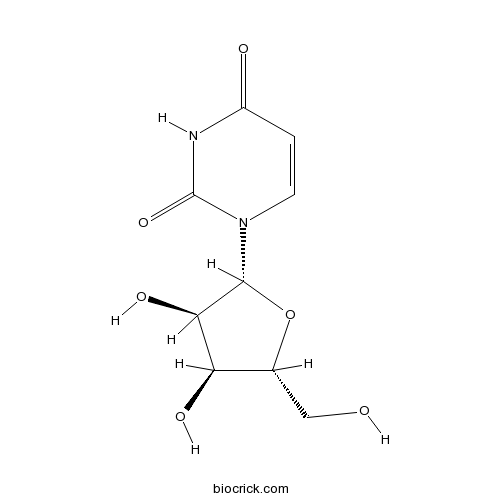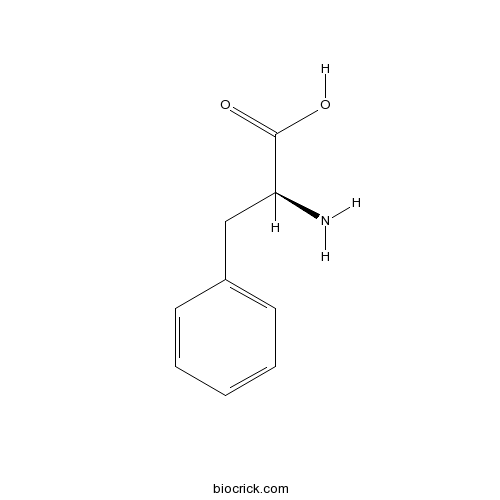Gekko swinhonis
Gekko swinhonis
1. The products in our compound library are selected from thousands of unique natural products; 2. It has the characteristics of diverse structure, diverse sources and wide coverage of activities; 3. Provide information on the activity of products from major journals, patents and research reports around the world, providing theoretical direction and research basis for further research and screening; 4. Free combination according to the type, source, target and disease of natural product; 5. The compound powder is placed in a covered tube and then discharged into a 10 x 10 cryostat; 6. Transport in ice pack or dry ice pack. Please store it at -20 °C as soon as possible after receiving the product, and use it as soon as possible after opening.
Natural products/compounds from Gekko swinhonis
- Cat.No. Product Name CAS Number COA
-
BCN4090
Uridine58-96-8
Instructions

-
BCN3818
L-Phenylalanine63-91-2
Instructions

Inhibition of tumor cell growth by adenine is mediated by apoptosis induction and cell cycle S phase arrest.[Pubmed: 29212228]
Gekko swinhonis has a long standing history in Chinese traditional medicine recognized for its application in treating patients with terminal cancer.In order to discover novel anticancer drugs with high anti-tumor efficacy and low toxicity to normal cells, we aim to investigate the anti-tumor components from Gekko swinhonis. Four nucleosides from the extracted samples were enriched, namely adenosine, guanosine, thymidine and inosine. We evaluated the antitumor effect of the four nucleosides and found that adenosine possessed the strongest anti-tumor effect. Besides, adenine could inhibit the growth of Bel-7402 and Hela cells in a dose and time dependent manner, but not normal human cervical keratinocytes. Bel-7402 and Hela cells had undergone apoptosis 48 hours after treatment as evidenced by morphologic changes under TEM, while adenine blocked cell cycle of tumor cells at S phase and subsequently causing cell cycle exit and promoting apoptosis. Moreover, the pharmacokinetics of adenine was stable in cell culture medium for up to 72 hours. Combining its potency with stability, we conclude adenine makes a promising candidate for an anti-tumor drug.
Complete mitochondrial genome of Gekko chinensis (Squamata, Gekkonidae).[Pubmed: 26000944]
We sequenced the complete mitochondrial genome of Gekko chinensis, which is an endemic species to China. The complete mitogenome is 17,906 bp in size, containing 37 genes coding for 13 proteins, two ribosomal RNAs, 22 transfer RNAs, and a control region. The A + T content of the overall base composition of H-strand is 61.1% (T: 27.6%, C: 25.5%, A: 33.5%, and G: 13.4%). The major non-coding region (control region) is 2530 bp in length and the A + T content is 67.9%. Besides, four tandem repeats were found within the control region. In Bayesian inference (BI), maximum likelihood (ML) and maximum parsimony (MP) trees, we found G. chinensis is a sister clade to Gekko swinhonis.
[DNA barcoding of COI gene in some medicinal animals of Lacertilia].[Pubmed: 23847935]
To identify some medicinal animals of Lacertilia, in total 59 individuals belonging to 12 species 7 genera 3 families, we used the universal barcoding primers to sequence these species, compared with other homologous sequences (564 bp) obtaining from the GenBank and finally constructed phylogenetic trees using Neighbor-joining, Maximum parsimony and Bayesian inference, respectively. As a result, the mean content of G + C (46.5%) was lower than that of A + T (53.5%). As calculated by Kimera-2-parameter model, the whole individuals mean distance for interspecies and intraspecies was 35. 5% and 1.7%, respectively. The mean distance for interspecies was 21 times as much as that for intraspecies. The mean distance for intraspecies of Gekko swinhonis, Hemidactylus frenatus and G. gecko was greater than 2%, respectively. Further analyses suggested that geographical groups of the three species might be of different subSpecies, even species. Of course, incorporating morphological characters and other unlinked genetic markers in future studies will offer further insights into the divergence. On the basis of phylogenetic trees constructed by COI, our results indicated that the taxonomy of the category (family, genus, and species) by DNA barcoding is consistent with morphological characters. Therefore, DNA barcoding is a useful tool for both identification and phylogeny of medicinal animals of Lacertilia, particularly for nonprofessor identifying authentication of Chinese crude drugs of these species.
Complete mitochondrial genome of Gekko swinhonis (Squamata, Gekkonidae).[Pubmed: 22950669]
The complete mitochondrial genome sequence of Gekko swinhonis was determined in this paper. The genome was 16,818 bp in length and contained 13 protein-coding genes, 2 rRNA genes, 22 tRNA genes, and 1 control region (CR). The gene composition and order of G. swinhonis were similar to most other squamate reptiles. The overall base composition of the genome in descending order was 31.35% A, 27. 71% C, 26.28% T, and 14.67% G, with a slight AT bias of 57.62%. CR is located between the tRNA-Pro and tRNA-Phe genes and is 1456 bp in length; some tandem repeat sequences and conserved elements (TAS, CSB1-3) were found in the CR.
Gekko-sulfated glycopeptide inhibits tumor angiogenesis by targeting basic fibroblast growth factor.[Pubmed: 22371501]
Basic fibroblast growth factor (bFGF) is a therapeutic target of anti-angiogenesis. Here, we report that a novel sulfated glycopeptide derived from Gekko swinhonis Guenther (GSPP), an anticancer drug in traditional Chinese medicine, inhibits tumor angiogenesis by targeting bFGF. GSPP significantly decreased the production of bFGF in hepatoma cells by suppressing early growth response-1. GSPP inhibited the release of bFGF from extracellular matrix by blocking heparanase enzymatic activity. Moreover, GSPP competitively inhibited bFGF binding to heparin/heparan sulfate via direct binding to bFGF. Importantly, GSPP abrogated the bFGF-stimulated proliferation and migration of endothelial cells, whereas it had no inhibitory effect on endothelial cells in the absence of bFGF. Further study revealed that GSPP prevented bFGF-induced neovascularization and inhibited tumor angiogenesis and tumor growth in a xenograft mouse model. These results demonstrate that GSPP inhibits tumor angiogenesis by blocking bFGF production, release from the extracellular matrix, and binding to its low affinity receptor, heparin/heparan sulfate.
Anticancer effects of 5-fluorouracil combined with warming and relieving cold phlegm formula on human breast cancer.[Pubmed: 22160948]
To investigate the anticancer effects of warming and relieving cold phlegm formula (, WRCP), a Chinese medical mixture composed of the aqueous extracts of Aconitum carmichaeli, Rhizoma bolbostemmatis, Phytolacca acinosa, Panax notoginseng, and Gekko swinhonis Gūenther, combined with 5-fluorouracil (5-FU) on human breast cancer in vivo.
Effects of Gekko sulfated polysaccharide-protein complex on the defective biorheological characters of dendritic cells under tumor microenvironment.[Pubmed: 21913004]
We previously isolated a sulfated polysaccharide-protein complex from Gekko swinhonis Guenther, a traditional Chinese medicine, and have demonstrated its direct anti-cancer effect on human hepatocellular carcinoma cell line SMMC-7721. Here we investigated the effects of Gekko sulfated polysaccharide-protein complex (GSPP) on the defective biorheological characters of dendritic cells (DCs) under SMMC-7721 microenvironment. Our findings have shown that the biorheological properties of DCs were severely impaired by SMMC-7721 microenvironment, including decreased cell deformability, migration, and electrophoresis mobility, increased osmotic fragilities, and changed organizations of cytoskeletal proteins. We also found decreased secretion of interleukin (IL)-12 and increased secretion of IL-10 in DCs. However, supernatant collected from nonmalignant liver cells had no effect on these parameters. SMMC-7721 cells were treated with GSPP and the supernatant was used to culture DCs. We found that the defective biorheological parameters of DCs, except for osmotic fragility, were partially or completely improved. The secretion of IL-12 did not change as compared with that of DCs in SMMC-7721 microenvironment, but the secretion of IL-10 was resumed to the control level. Our results indicate that GSPP could partially restore the defective biorheological characteristics of DCs via modifying the tumor microenvironment and decreasing the secretion of IL-10 of DCs.
Anti-migration effects of Gekko sulfated glycopeptide on human hepatoma SMMC-7721 cells.[Pubmed: 21681148]
Gekko swinhonis Guenther has been used as an anti-cancer drug in traditional Chinese medicine for hundreds of years. Previous studies showed that the Gekko sulfated polysaccharide-protein complex suppressed the proliferation and migration of hepatoma cells. Gekko sulfated glycopeptide α was obtained from Gekko sulfated polysaccharide-protein complex using papain hydrolysis. Gekko sulfated glycopeptide α inhibited the proliferation and migration of SMMC-7721 cells. The secretion of IL-8 and the concentration of intracellular calcium were decreased after Gekko sulfated glycopeptide α exposure. SMMC-7721 cells in the control group showed abnormal features, with a polygonal shape, whereas this changed to a spindle shape after the treatment with Gekko sulfated glycopeptide α. Actin filaments were distributed diffusely along the cell membrane in control cells, whereas those were polymerized and preferentially accumulated in the cytoplasm of treated cells. Microtubules distributed in the cytoplasm of untreated cells were located diffusely whereas those in treated cells were polymerized. Therefore, Gekko sulfated glycopeptide α inhibit the migration of hepatoma cells via reducing the secretion of IL-8 and the concentration of intracellular calcium, as well as regulating the reorganization of cytoskeleton.


